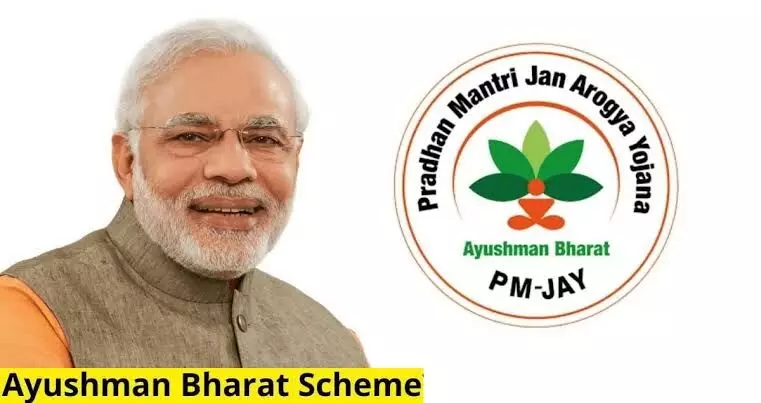Is PM-JAY a Band-Aid on a Broken System?
Pradhan Mantri Jan Arogya Yojana faces sustainability challenges, struggles to bridge systemic gaps in healthcare access, despite benefits to millions.;

In 2018, a new hope was launched for millions of Indian families struggling with healthcare costs. Named Pradhan Mantri Jan Arogya Yojana (PM-JAY), and rolled out under the broader Ayushman Bharat scheme, it promised something remarkable: health coverage of up to ₹5 lakh per family for essential hospital treatments, designed to protect those most vulnerable from the crushing weight of medical bills.
Through the years that followed, there indeed were one too many challenges that came into the picture, saying that there is no wound which time cannot heal.
Today, about five years later, PM-JAY appears to be at a turning point. While it is claimed that many families have greatly benefited from this, the program is facing challenges that endanger its sustainability. Hospitals and providers wrestle with issues in funding and resource allocation, while many underserved areas remain out of reach. The big question remains: is PM-JAY truly transforming healthcare access for India’s neediest, or is it struggling to bridge the deeper, systemic gaps that keep quality care out of reach for so many?
One of PM-JAY’s core promises was to make quality healthcare accessible across the length and breadth of India. But on the ground, rural communities still struggle to find even basic healthcare facilities within reach. Many of the hospitals enrolled under PM-JAY are clustered in urban and semi-urban areas, leaving rural families with limited access. This gap reveals a crucial flaw: while PM-JAY helps cover medical expenses, it doesn’t guarantee that care is available close to home for millions of people living in remote areas. For these rural patients, seeking treatment often means traveling long distances, only to encounter overcrowded hospitals, long waits, and, sometimes, even rejection at the door. The result is a system where financial support exists, but the accessibility and quality of care remain painfully out of reach for those who need it most.
PM-JAY includes a comprehensive list of services and procedures under its umbrella. However, it often tends to ignore one very important aspect: basic outpatient services. Given that the program is weighted toward hospital-based treatment, it ignores the fact that many Indians are suffering from chronic diseases that necessitate recurrent hospital visits with undelivered medication – which are not included in PM-JAY cost package. To innumerable households, this translates that and even if there are cost containment measures for inpatient treatment costs, the non-institutionalized costs such as outpatient treatment still remain high for majority of the people and place continuing economic burden on those who find it impossible strain. This limitation in the gurney strategy is reduction of medical costs as well as the unhealthy incidence of healthcare deprivation targeted by the strategy.
PM-JAY heavily relies on the participation of private healthcare providers, as India's public healthcare system is already overburdened and under-resourced. However, many private hospitals hesitate to include themselves under the scheme due to lower reimbursement rates compared to their standard charges. Additionally, there are reports of private hospitals “upcoding” treatments—billing for more expensive procedures to maximize reimbursements.
The rollout of PM-JAY has exposed stark regional inequalities in access to healthcare. In states with stronger infrastructure, like Maharashtra and Gujarat, enrollment and utilization rates are notably higher, reflecting the advantage of existing resources. However, in economically weaker states like Bihar, Uttar Pradesh, and Jharkhand—where poverty is more widespread and healthcare facilities are fewer—implementation lags significantly behind.
As a result, PM-JAY’s reach remains limited precisely where it is needed most, underscoring the program’s struggle to bridge these critical regional disparities.
PM-JAY’s digital health records raise critical concerns about data privacy. With millions of citizens’ health data being digitized, concerns regarding data security and privacy are paramount. The government must provide clear assurances on data protection policies to avoid misuse and safeguard sensitive health information, especially given India’s evolving yet still nascent data protection regulations.
India’s healthcare system urgently requires reform at the grassroots level—expanding primary health centers, equipping them adequately, and ensuring more trained medical professionals are available in rural communities. Without a solid primary care network, initiatives like PM-JAY may end up addressing only the surface symptoms of India’s healthcare crisis rather than tackling the underlying causes. Rather , what India needs is a holistic approach that prioritizes preventive care, early diagnosis, and widespread public health education.

